Arthritis means joint inflammation. Osteoarthritis is one of the most common causes of knee pain. Often times, the onset of pain is insidious and you may not recall a particular injury.
Osteoarthritis is due to the breakdown or wear of the cartilage surfaces of the joint. Cartilage acts as a cushion and a slippery surface that allows one surface to move against another without rubbing or causing irritation. Cartilage wear is not always detectible by X-rays during its early stages. As it progresses, however, the space between the ends of the bone becomes narrower and we can see other signs of abnormal rubbing such as bone spurs.
The knee is divided into three compartments:
- Medial compartment (inside of knee)
- Lateral compartment (outside of knee)
- Patellofemoral joint (area under the kneecap)
A patient can have arthritis involving any one or a combination of all three compartments. Osteoarthritis causes pain, stiffness and swelling of the knee. Common complaints may include pain with ambulating, difficulty climbing and descending stairs and early morning stiffness or stiffness after sitting for long periods of time. As arthritis progresses, a patient may experience periodic swelling and pain.
Ultimately, the best solution for some patients is total or partial knee arthroplasty (replacement). Dr. Taylor does not perform this procedure, but can refer you to a trusted colleague who does if it is appropriate. Early osteoarthritis is generally treated without surgery. Below are some of the non-surgical treatments that can provide symptomatic relief.
Weight loss can be a very powerful treatment. The knee sees 4-5 times the body’s weight when ascending and descending stairs and up to 7 times the body’s weight when jumping. Losing 20lbs, therefore, can tremendously reduce the stress on your knee.
Activity modification to avoid things that excessively load the knee such as climbing stairs, squatting, lunging, knee extension, and running helps reduce the stresses on your knee.
Low impact activities, such as bicycling, swimming, elliptical trainer and Nordic track are much better tolerated by a knee with arthritis.
Ice/Heat treatments:
Heat treatments before activities can be beneficial.
Ice treatments after activities help control pain and swelling.
Medications:
Prescription Anti-Inflammatory Medications:
Naproxen, Relafen, Celebrex, Mobic and Voltaren are prescription strength non-steroidal anti-inflammatories (NSAID’s). These should be taken with food.
Over-the-Counter Anti-Inflammatory Medications:
Advil, Ibuprofen, Aleve should also be taken with food. If you are taking prescription NSAIDs, you should not take these medications at the same time.
Supplement Medications:
- Glucosamine-chondroitin – Studies have suggested these all-natural supplements may help relieve arthritis pain by replenishing chemicals that are the building blocks for cartilage growth. The benefit is slight and variable from patient to patient. Dr. Taylor would suggest brands Cosamin DS or Osteo Bi-Flex, available in nutrition stores. However, the cost may be high and the benefit small. Recommended dosing is glucosamine 1500mg/day with or without chondroitin 1200mg/day. If no benefit is realized by 8 weeks, it is unlikely that any will occur.
- Turmeric Curcumin – This is an Indian spice with an herbal anti-inflammatory effect. Some patients respond dramatically well to this. You can get this at a nutrition store and try it for one month.
- Wobenzym – This is an enzymatic supplement that has an anti-inflammatory property. Again, you can try this for one month and see what type of pain relief you get from this supplement.
Injections (Cortisone Type):
Corticosteroid injections: Steroid injections directly into the joint, reducing inflammation and pain. This is only recommended every 3-4 months. These are very effective, but generally used after the wear is advanced.
Injections (Supplemental Type):
Euflexxa, Hyalgan, Synvisc, Orthovisc and Supartz are natural lubricants injected directly into the joint. This can be given as one injection or as a series of three injections, one time per week for three weeks. Most insurance companies will cover these injections. It is important to note that 1/3 of patients see significant long-term relief, 1/3 see moderate relief, and 1/3 see no benefit at all.
Braces:
Unloader braces help to unload a specific compartment, which may help to slow the progression. These are expensive and more practical for use in low demand sports rather than everyday life. Custom fit braces are most comfortable and seem to work better, but the financial cost is greater. These braces are not very effective in patients with bigger (thicker) legs.
Bariatric Surgery:
For many patients that are very overweight, bariatric surgery is a reasonable and excellent option. This surgery has become increasingly effective for weight loss with a very good safety profile. If you were able to lose up to 100 pounds, then this greatly improves knee pain and delays the need for knee replacement surgery.


